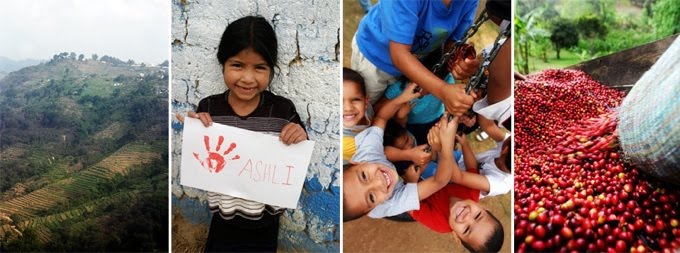- After harvesting the coffee cherries the beans have to be sorted. Unlike a wet process, which uses water to help separate the "good" from the "bad" and the "ugly," a natural process coffee is generally hand sorted, by winnowing using a sieve. Coffee falls through the seive, rocks and twigs stay in it. This, however doesn't separate good and bad coffee. This is why some people will put the coffee in water, just like in a wet process, and remove any floaters. The picture shows a nice ripe coffee cherry, yum!
- The cherries are then spread out to dry in the sun, this is often done on patios or tables. It can take weeks for cherries to dry so it is important to prevent mildew, and rotting, which is a risk of this kind of processing. There are times that huge amount of coffee are ruined using this method just because of inclement weather, or unexpected humidity. To help prevent the coffee going bad cherries are raked or even turned by hand. Sometimes machines are used to dry the coffee part of the way to speed this process up. The picture shows a drying cherry.
- Once dried to a stable moisture content all the outer layers of the cherry are removed through "hulling."
Natural process coffees are common in areas with low humidity, and are highly sought after by many roasters because of their fruity tones. Our Brasil is a great example of a dry process coffee. Come in and try it!


No comments:
Post a Comment